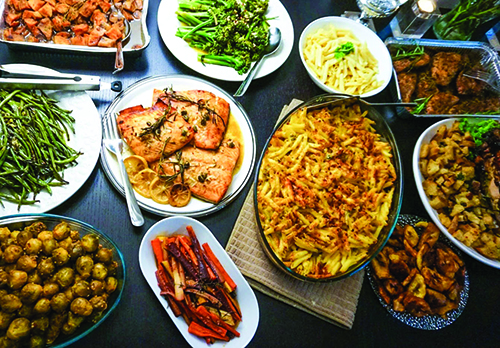Wisconsin among the most wasteful in the nation


Winter tends to be a very foodie time of year; there’s Thanksgiving and Christmas, with all the turkey excesses. All across the nation, families have filled up the freezer, stocked up the fridges and gotten supplies for each food-focused gathering.
But what happens to everything that’s bought? Are people as good as they could be about using everything up? Or are they guilty of food waste?
Cherry Digital, a communications agency, wanted to find out just how wasteful Americans are and surveyed 3,200 individuals, to find out how much was thrown away this past year.
The first discovery, was that Wisconsin households waste $1,159 worth of food, annually, or, in other words, almost a third (29 percent) of their food each month, because it’s gone past its expiration date. The national average was $907, meaning Wisconsinites are among the most wasteful in the nation.
So why are people so wasteful? It seems that the misunderstanding of food labeling might be a huge factor. The survey found that nearly half of respondents won’t eat food that’s marked as past its sell-by date, but perhaps that’s because they are misinformed about what the sell-by date actually means – it is the last date by which it must be sold in a store; however, after that, it’s still good to eat (even if it’s past what’s marked as the use-by date).
Again, the label – use-by date – caused confusion; only one-quarter knew that it signifies the last date for use of the product at its peak quality. Nearly a third believed that it was the last date the product was edible, almost a quarter thought it meant that it was the last date the food product could be displayed and sold in a store, and 21 percent thought it meant the date that the product would be at its best flavor and quality – when, in fact, this is the “best-by” date.
Over half of people believe that best before dates on fruits and vegetables should be scrapped altogether, because they say it’s easy to tell if something has gone off, just by touching it. The survey also found that the foods Americans would be most likely throw away are dairy products, followed by meat, fish, bread and vegetables.
To reduce waste, the following are steps to take:
• Freeze the food right up till the use-by date and it will be good to eat months later. Just double check what it is, as not everything can go in, like soft cheeses.
• Freeze milk into an ice cube tray. As the survey revealed, most people will throw away dairy products first, but instead, they can use this handy tip instead of wasting. Use the frozen milk cubes in coffee or tea.
• Put herbs into a glass of water to prevent them from wilting quickly, they will last much longer.
• If yogurts are getting near their use-by date, mix them up with some over-ripe fruit for a smoothie or even freeze into ice-lollies.
• Turn stale bread or crusts into breadcrumbs, by putting them in a food processor. They are good mixed with herbs or onions as a stuffing for chicken, or to top baked fish.
• When cooking with foods such as potatoes, broccoli or carrots, use it all. Don’t remove the peel or cut the stems off, as they often have additional nutrients in them. If the peel or stem is not desired, compost what isn’t used.
• Donate the items that won’t get used by the end of their shelf life. There will be plenty of food kitchens nearby, that would really appreciate anything to spare in the cupboards.



